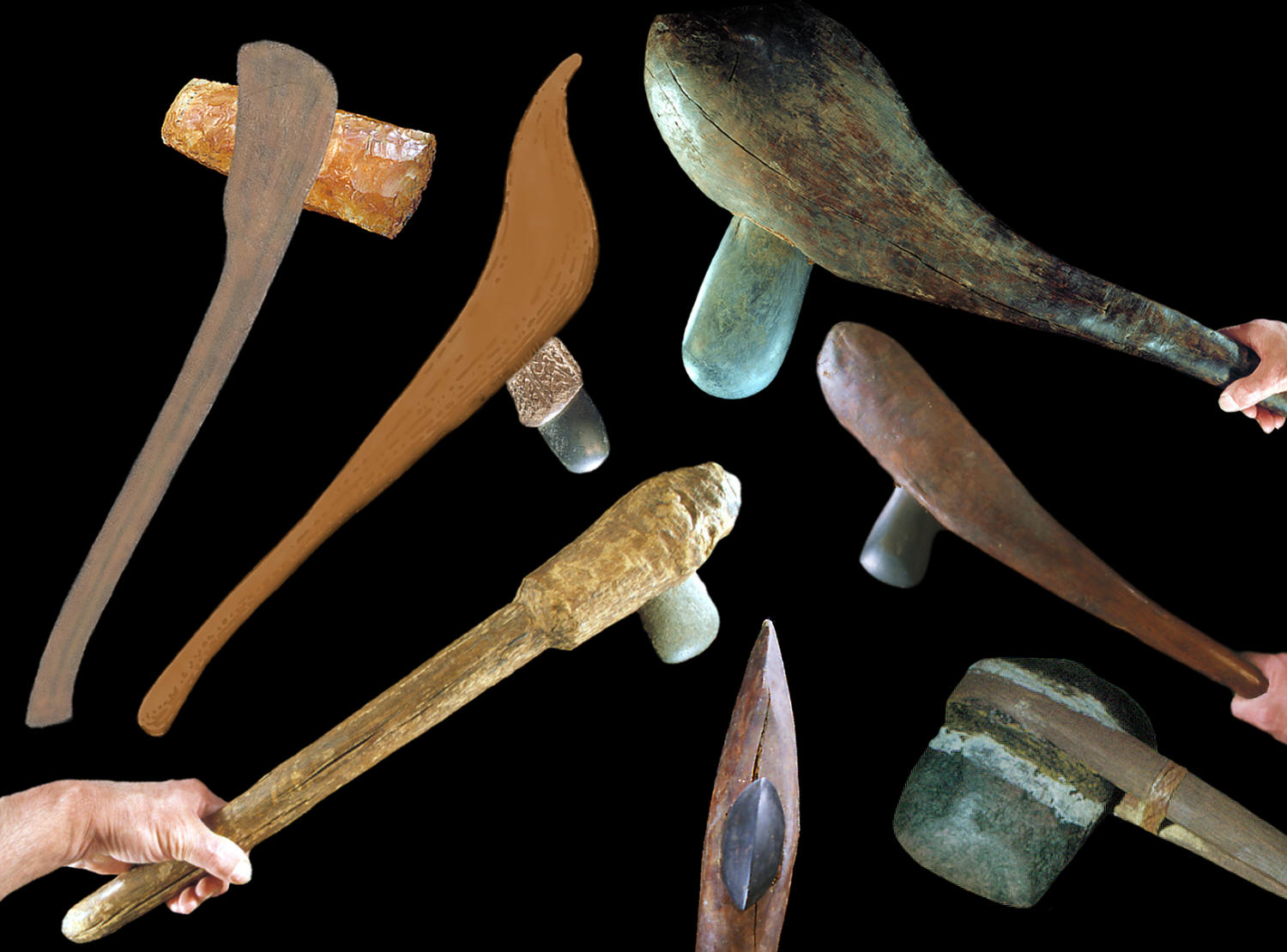|
HAFTED AXES
WORLDWIDE
COPYRIGHT
FEBRUARY 28, 2014 PETER A. BOSTROM
RETURN TO PAGE 1
Stone axes were hafted onto wooden handles with the
blades secured in a position that is parallel with the handle. Adzes
were hafted in a position that is perpendicular to the handle. Axes were
attached to handles in several different ways. One technique used
adhesives made from animal, vegetal or mineral ingredients. Another
technique simply holds the axe in place with friction when the axe is
wedged tight enough into the handle. Various types of natural fibers and
other materials were also used to tightly wedge an axe in place. Some
axes were also attached to a handle
with the use of strips of animal hide or sinew. Australian axes were
hafted with an adhesive and a wrap-around split-wood handle.
The axe at top right and just below it are from New Guinea and was
used mainly to split logs. The larger axe is known as a bulbous axe. The
axe at lower right is from Australian and is hafted with an adhesive and
a wrap-around split-wood handle. The axe at lower left
is reported to have been found many years ago in a dry rock shelter in
New Mexico. The celt was added to the handle after it was found. The axe
at top left shows the hafting technique for a Neolithic period flint axe
from northern Europe, the handle is computer generated. The axe at left
center is a computer generated image that shows the hafting technique
for a hard stone polished celt or axe that was found on a Swiss Lake
Dweller site in Switzerland.

|
